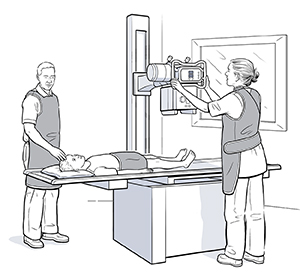Foot Care for Your Child
Exams of the feet and ankles make sure that your child's bones are growing the right way. Your healthcare provider can also make sure that your child is walking correctly. This helps prevent some future foot problems. And if a problem does arise, it can be handled early—when it is easiest to treat.
When your child needs foot care
During a foot exam, the healthcare provider will watch your toddler walk. If a gait problem exists, the healthcare provider works to find its cause:
-
Only 1 to 2 out of every 10 children continue to have flat feet in adulthood.
-
In most cases, flat feet do not need treatment unless your child has pain or trouble moving.
-
To help with severe flat feet, your child may sometimes need special shoes or custom-made shoe inserts (orthotics).
-
Intoeing is when your child walks or runs with the toes pointed inward instead of straight. This may be called being "pigeon-toed." Intoeing normally corrects on its own without care.
-
If your child's feet turn in or out a lot, they may need corrective shoes, splints, or night braces. But this is rare. Wearing these devices can help reposition the foot as it grows.
Your child's active feet
The foot's bone structure is pretty well formed by the time your child reaches age 7 or 8. But if the part where bone growth starts (growth plate) is injured, the damaged plate may cause the bone to grow oddly or stop growing altogether. But with a healthcare provider's care, the risk for future bone problems can be reduced.
 |
| An x-ray can show damage to a bone growth plate. |
When to call the healthcare provider
If an injury is mild, your child likely will not remember it for very long. But if your child keeps complaining of pain, see your child's healthcare provider. Also call the healthcare provider anytime an injury causes:
-
Serious swelling
-
Localized tenderness
-
Limping
-
Redness
-
Warmth
-
Ongoing night pains
Treating an injury
If a bone or growth plate is damaged, your child may need to use crutches to take weight off the injury as it heals. In the case of fracture, your child may need to wear a cast, boot, splint, or brace to hold the bone in place during healing.
Online Medical Reviewer:
Dan Brennan MD
Online Medical Reviewer:
Rahul Banerjee MD
Online Medical Reviewer:
Stacey Wojcik MBA BSN RN
Date Last Reviewed:
7/1/2023
© 2000-2024 The StayWell Company, LLC. All rights reserved. This information is not intended as a substitute for professional medical care. Always follow your healthcare professional's instructions.